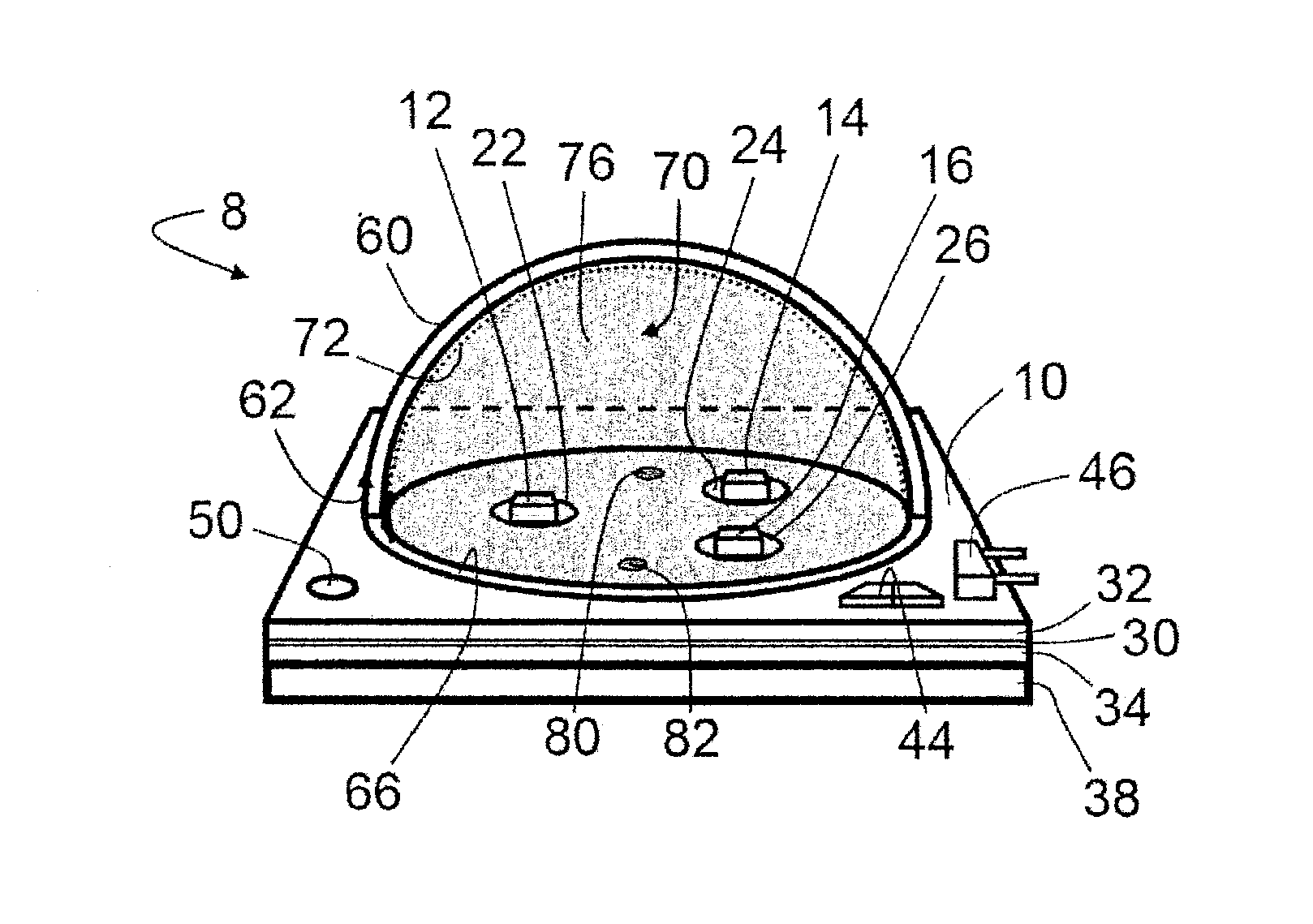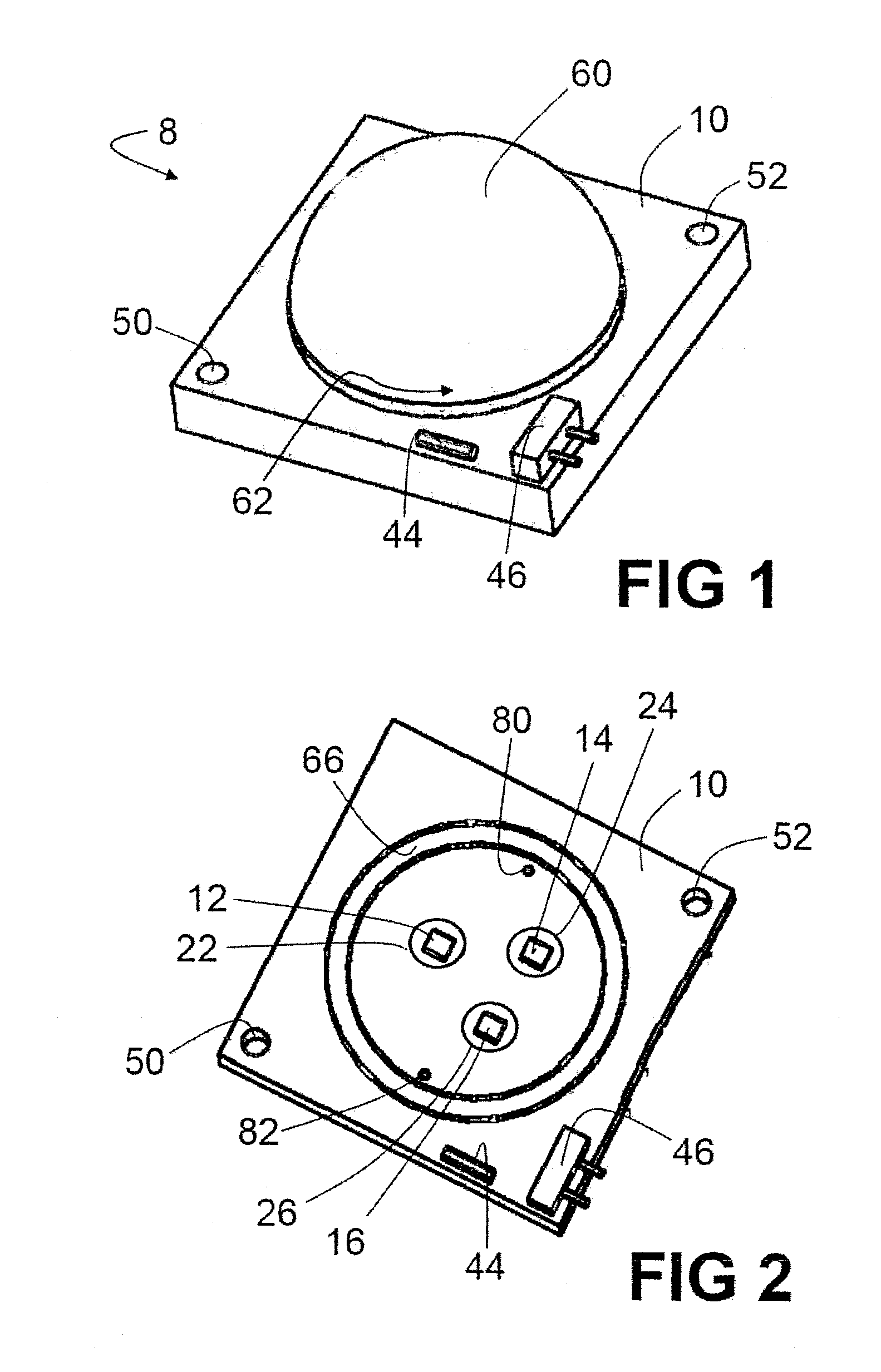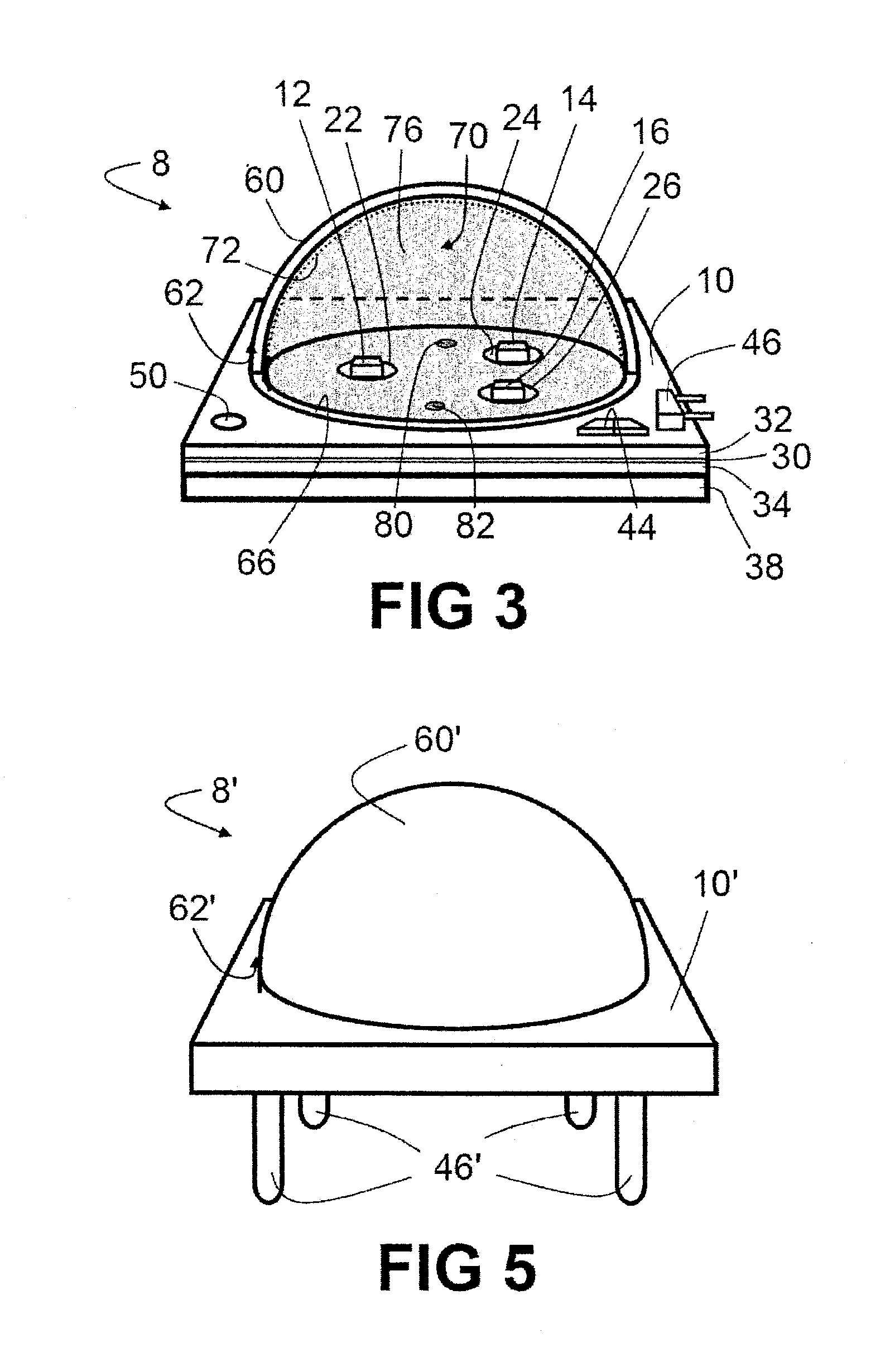Light emitting diode component
a technology of light emitting diodes and components, applied in the field of single-chip and multiple-chip light emitting diodes, can solve the problems of low light output intensities low light output intensity of early light emitting diodes, and general inability to compete with incandescent and fluorescent light sources. , to achieve the effect of reducing the cost improving the efficiency of light emitting packages, and improving the quality of light emi
- Summary
- Abstract
- Description
- Claims
- Application Information
AI Technical Summary
Benefits of technology
Problems solved by technology
Method used
Image
Examples
Embodiment Construction
[0050]With reference to FIGS. 1-3, a light emitting package 8 includes a printed circuit board 10 on which one or more light emitting chips or die are disposed. The printed circuit board is preferably substantially thermally conductive. For example, a metal core printed circuit board can be employed. In the illustrated embodiment, three light emitting chips or dice 12, 14, 16 are disposed on the circuit board 10; however, the number of dice can be one die, two dice, or more than three dice. The die or dice can be group III-nitride blue or ultraviolet light emitting diodes, red group III-phosphide or group III-arsenide light emitting diodes, II-VI light emitting diodes, IV-VI light emitting diodes, silicon or silicon-germanium light emitting diodes, or the like. As used herein, the term “ultraviolet” is intended to encompass light emitting diode emission having a peak wavelength less than or about 425 nm. In some contemplated embodiments, the die or dice are edge emitting lasers or v...
PUM
 Login to View More
Login to View More Abstract
Description
Claims
Application Information
 Login to View More
Login to View More - R&D
- Intellectual Property
- Life Sciences
- Materials
- Tech Scout
- Unparalleled Data Quality
- Higher Quality Content
- 60% Fewer Hallucinations
Browse by: Latest US Patents, China's latest patents, Technical Efficacy Thesaurus, Application Domain, Technology Topic, Popular Technical Reports.
© 2025 PatSnap. All rights reserved.Legal|Privacy policy|Modern Slavery Act Transparency Statement|Sitemap|About US| Contact US: help@patsnap.com



